7/11 - "Be/Longing": Summer Photography Show (San Francisco)
If you're in San Francisco, be sure to get to this wonderful three person photo show opening on Friday evening, July 11th.
![]() Darija Jelincic 32" x 40"
Darija Jelincic 32" x 40"
Fouladi Projects is pleased to present an exhibition of new works by three women photographers. The works in the show vary in content, but all investigate the human issues of isolation, containment and longing. Inherent in our existence is the need to balance the conundrum between being an individual, physically separate, yet also requiring a vital connection to others to thrive.
![]() Anne Veraldi 24' x 22"
Anne Veraldi 24' x 22"
"Be/Longing": Summer Photography Show
Featuring new work by Nina Dietzel, Darija Jelincic and Anne Veraldi
Opening reception: Friday, July 11th, 6 to 8pm
Nina Dietzel's "Paris Series" diptychs juxtapose images which cleverly reveal the universal tension between masculine and feminine archetypes.
Darija Jelincic's works on view are from her "Escapes" series, beautifully capturing vignettes of human culture clustered together against the great expanse of the sea and the sky.
Anne Veraldi's photographs are a selection from her "Outside-In Series", which depict both found and remnant artifacts encapsulated within the iconic mason jar, as a way of preserving wistful memories from the past.
--
Fouladi Projects
1803 Market Street
San Francisco Ca 94103
415 621 2535
fouladiprojects.com
The World’s First Digital Camera by Kodak and Steve Sasson
![]()
Ever wonder when and where the first digital camera came from? Well, in 1975 an engineer at Eastman Kodak named Steve Sasson produced the very fist digital camera pictured here. How did it work? Sasson writes:
![]()
"It had a lens that we took from a used parts bin from the Super 8 movie camera production line downstairs from our little lab on the second floor in Bldg 4. On the side of our portable contraption, we shoehorned in a portable digital cassette instrumentation recorder. Add to that 16 nickel cadmium batteries, a highly temperamental new type of CCD imaging area array, an a/d converter implementation stolen from a digital voltmeter application, several dozen digital and analog circuits all wired together on approximately half a dozen circuit boards, and you have our interpretation of what a portable all electronic still camera might look like."
The 8 pound camera recorded 0.01 megapixel black and white photos to a cassette tape. The first photograph took 23 seconds to create.
To play back images, data was read from the tape and then displayed on a television set:
Corey Arnold, Fisherman/ Photographer
Was just thinking about our old friend Corey Arnold, the brilliant photographer and commercial fisherman, who hails from Portland when he's not traveling the world fishing and shooting. We were going to do a short interview with him, but it’s going to have to wait as he’s off in Alaska for the salmon fishing season. In the meantime, enjoy a sampling from this talented photographer - For more beautiful and amazing images: coreyfishes.com
Also, be sure to view his recent feature with Time Magazine on why Sea Lions are starving to death along the California coast. Arnold visits the Marin Mammal Center for this photo essay.
![]()
![]()
![]()
![]()
![]()
![]()
![]()
![]()
![]()
![]()
![]()
![]()
![]()
![]()
![]()
![]()
![]()
![]()
![]()
![]()
![]()
![]()
![]()
![]()
A Visual Tour of Dickerman Prints
A few pulls of the flat files around here at Dickerman Prints can reveal a stimulating selection of musical eye candy. We're sure you recognize many of the artists captured.
Below is a little tour of Dickerman Prints and a peek inside some of those flat files mentioned above.
NOTE: Can you spy the great writer William S. Burroughs?







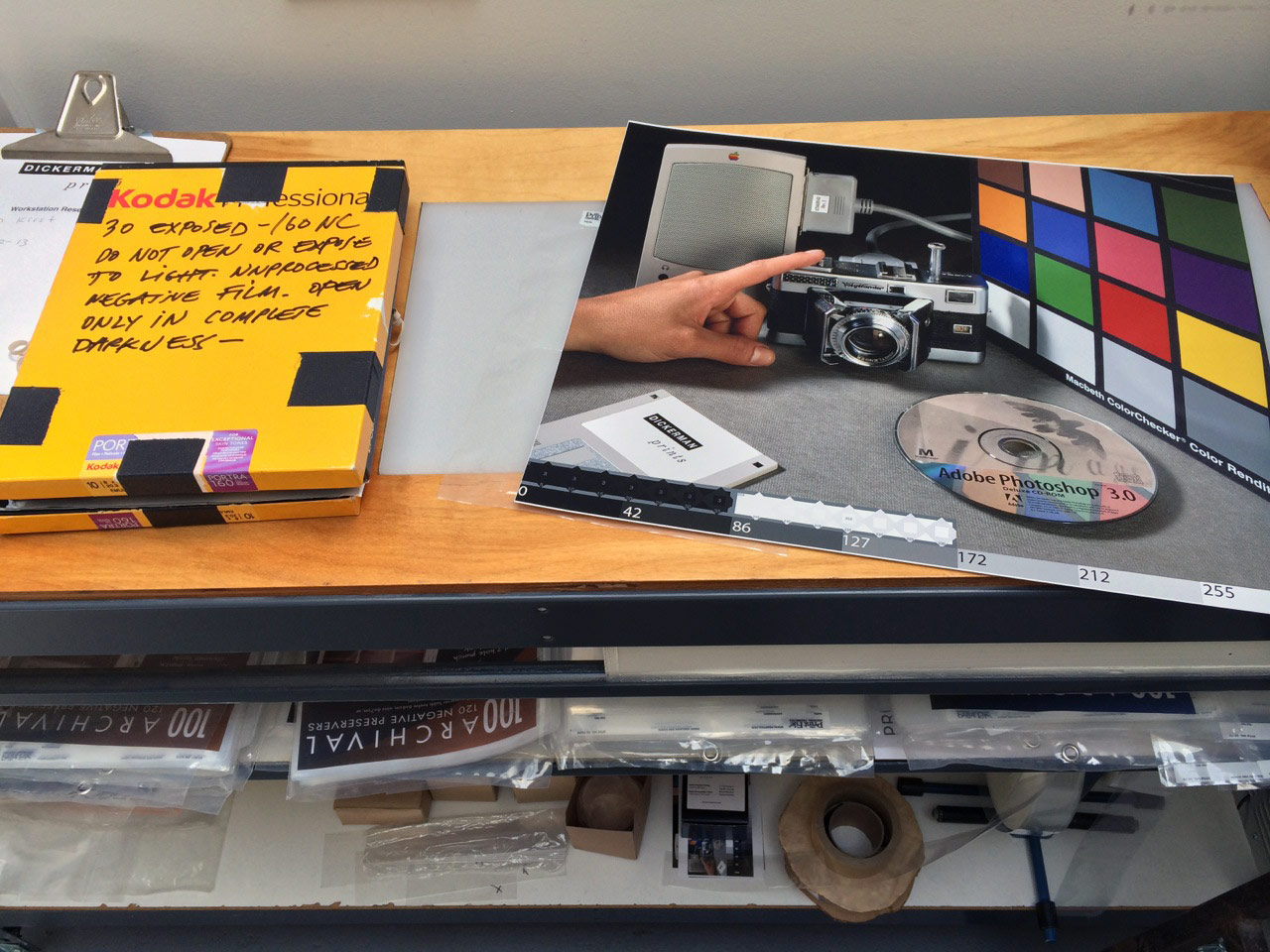



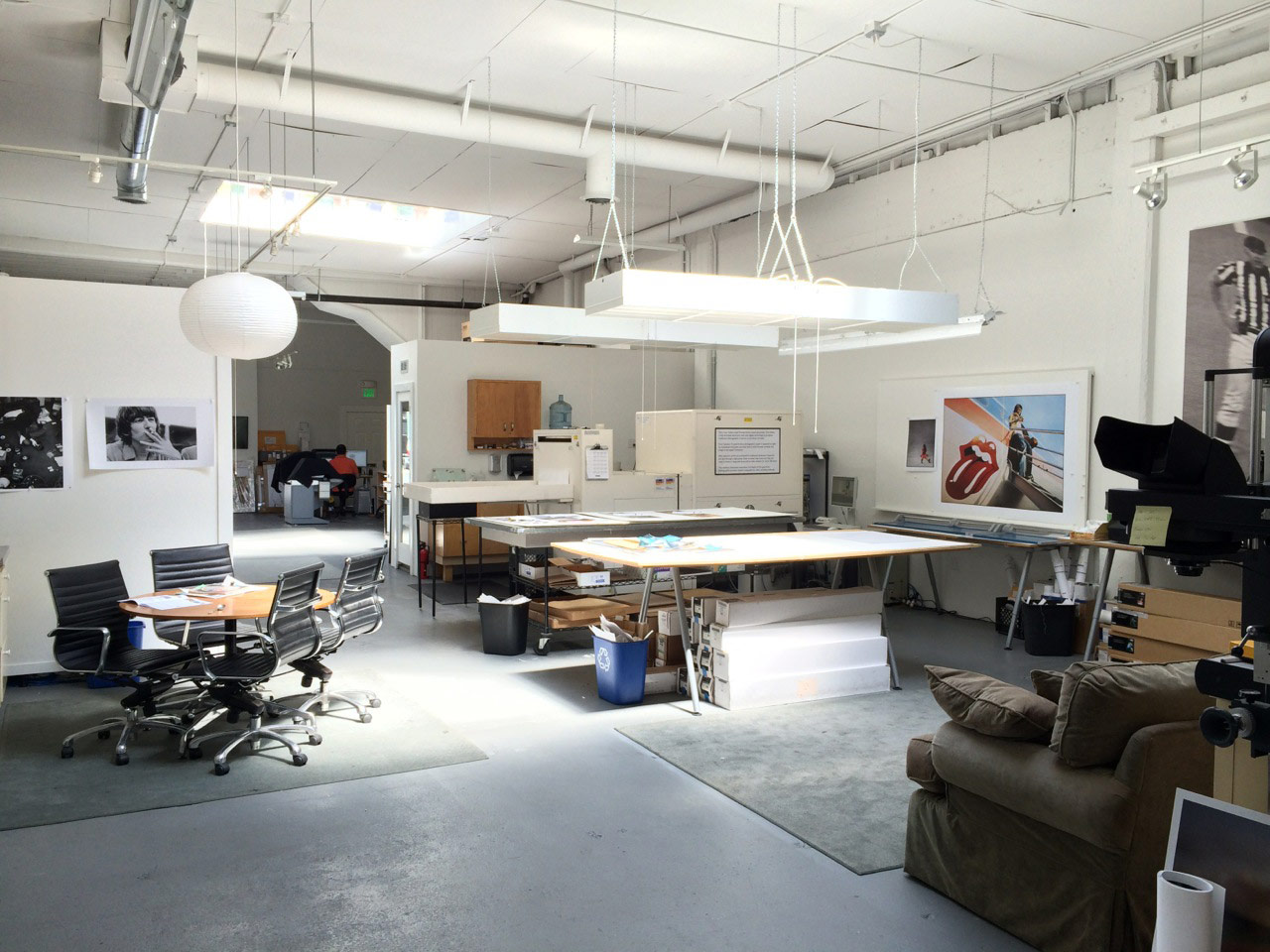

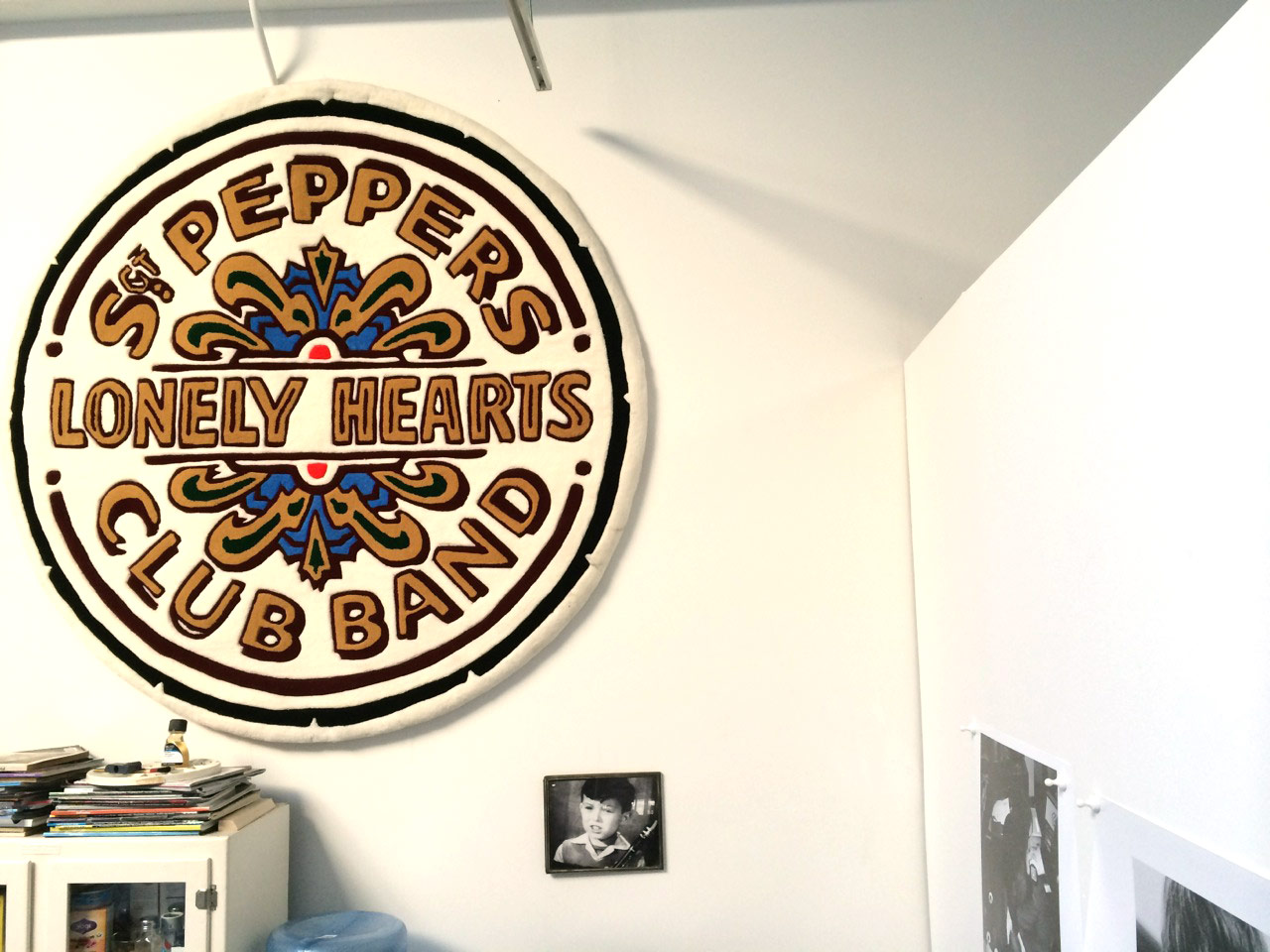





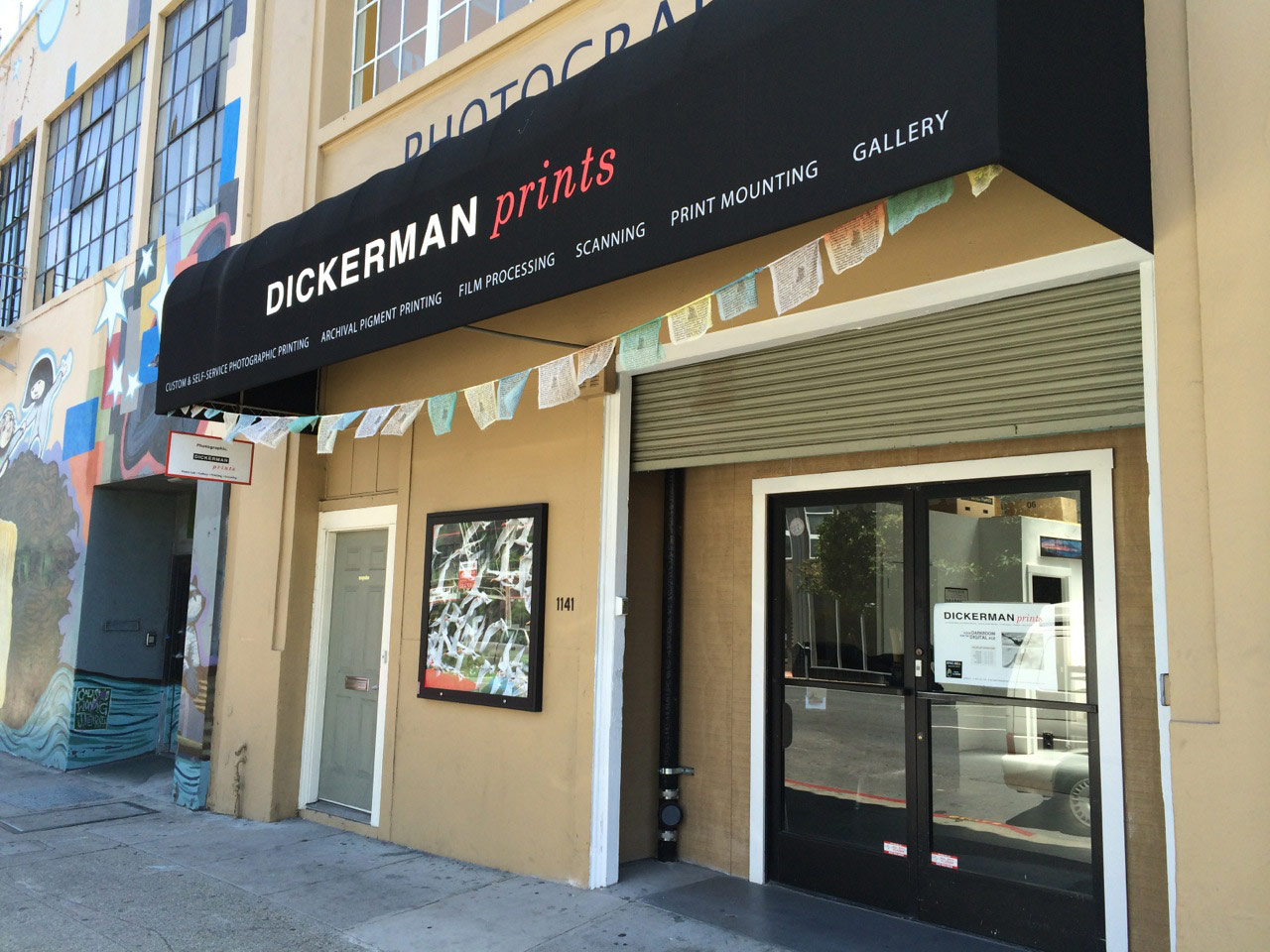









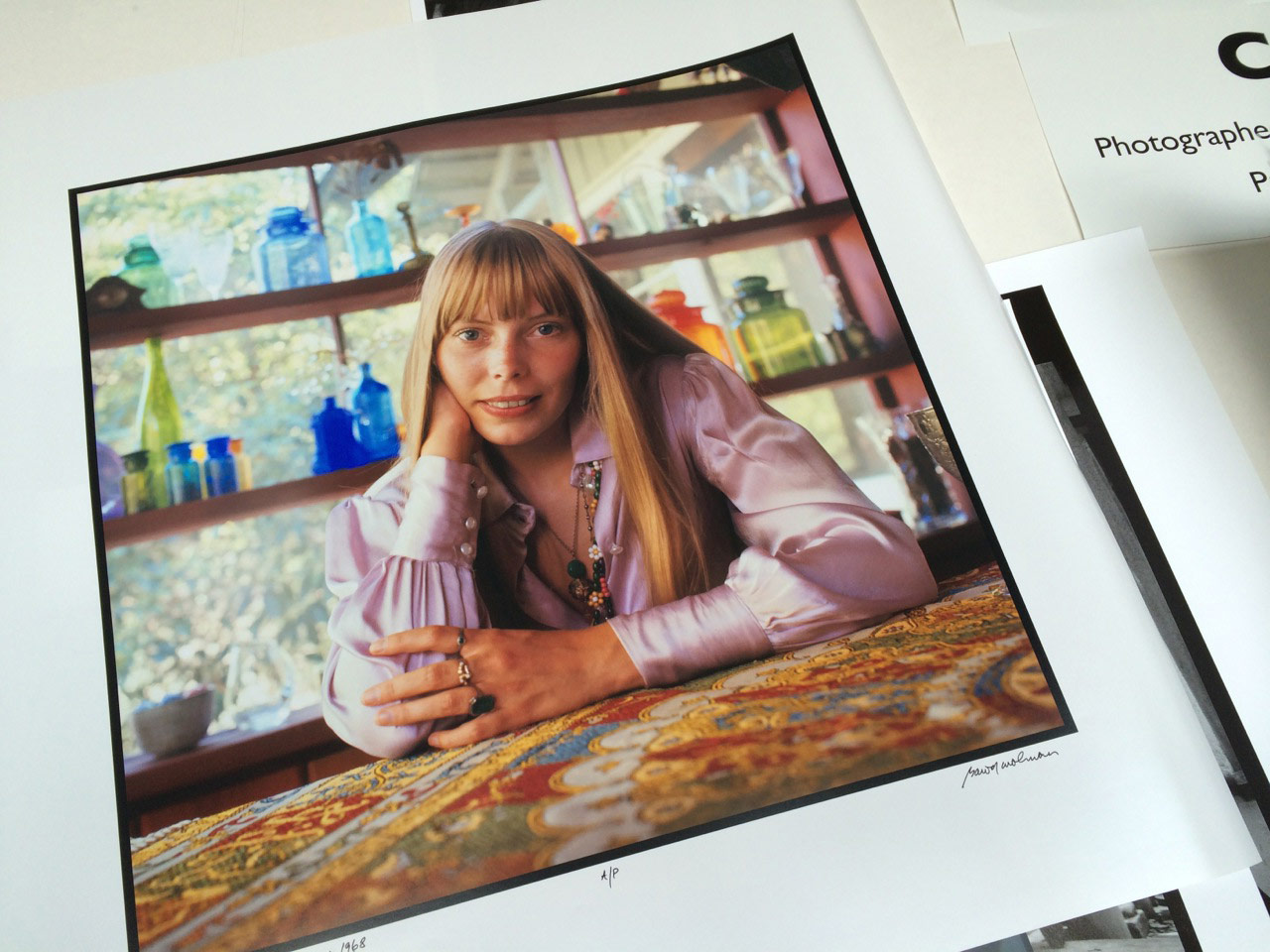
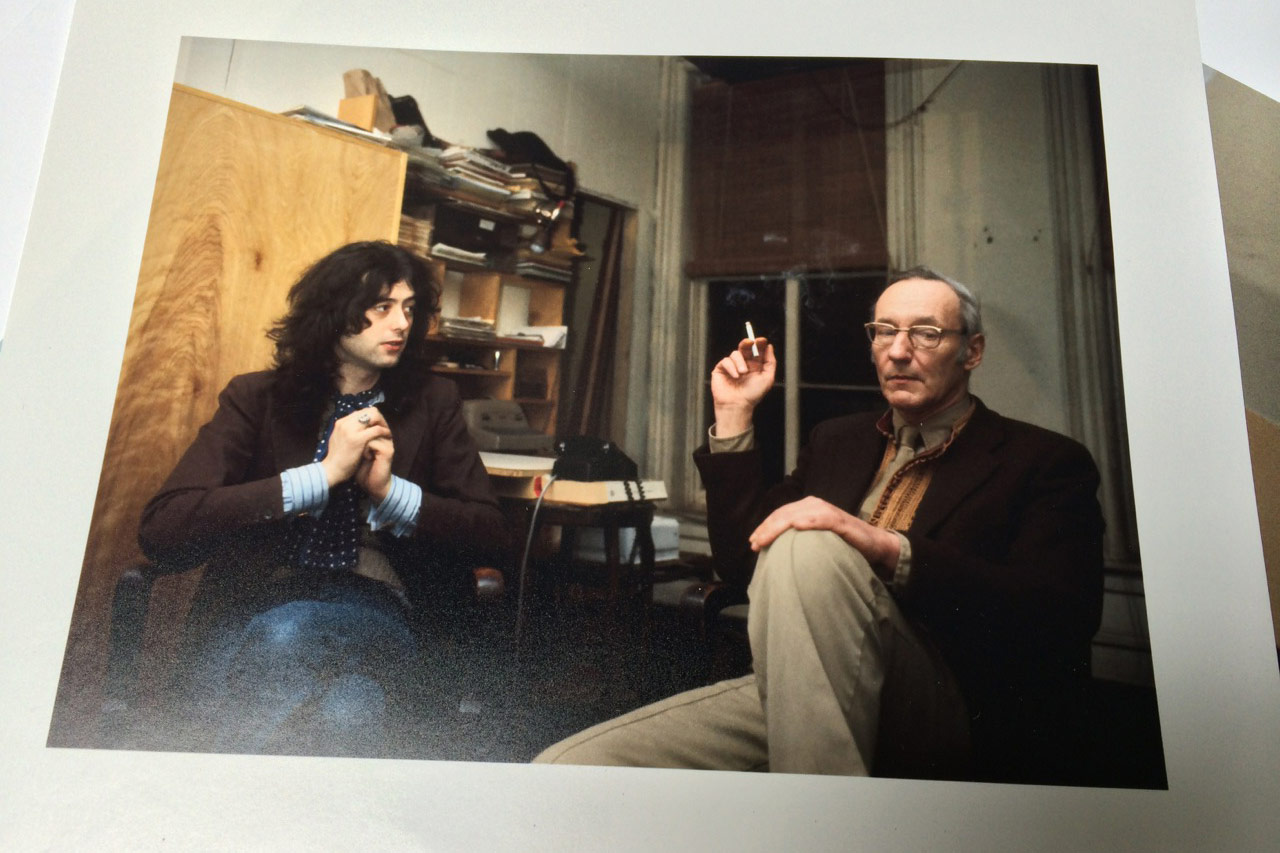


ASMP Printing Workshop
Join us for a comprehensive workshop in collaboration with ASMP Norcal on Fine Art Photography Printing:
![]()
WEDNESDAY FEBRUARY 26TH FROM 10 AM to 4:30 PM
THE IMAGE FLOW, 401 Miller St., Mill Valley, CA, 415-388-3569
Visit www.asmpnorcal.org for more information on tickets and presenters.
Session 1
Fine Art Prints
This section of the workshop will go over fine art printing, as it relates to the new and traditional materials and methods: silver, inkjet, digital press, and alternative process prints
What are some important qualities of a finished print? What can a professional printer can do for you?
Hahnemuhle
This section will cover how to choose between different inkjet papers and how they behave differently. What is archivability? There will be a discussion of different inks, acid, environmental exposure factors and paper profiles
Session 2 & 3
Overview of Digital Workflow and Capture
This section will include an overview of topics in your printing workflow: input, processing, output, color calibrated workflows, color profiles and consistency.
The Digital Darkroom
How do you create the perfect Master File? Here, we will go over the basics of Digital Asset management, global versus local adjustments, plugins, and sharpening.

Jason Hanasik’s Portraiture Projects
We first discovered Jason Hanasik’s work through his submissions to our recent exhibition at the lab, “The Americans 2013.”His portraits of youth NJROTC participant Sharrod have a pensive, authentic feel to them, and we were interested in learning more about his process.
Take a look at our interview below to learn more about his project with Sharrod, “I slowly watched him disappear,” and other works in “He Opened Up Somewhere Along the Eastern Shore” and “My father (and other men).”
![]()
Kim Sikora: How did you first become connected with Sharrod as a subject? What inspired this project?
Jason Hanasik: During my first semester of graduate school, I started a project that would become my thesis work called “He Opened Up Somewhere Along the Eastern Shore.” By the end of my first semester, I realized that I was working with and on a larger idea about the evolution and devolving of the military body. So, when my father asked me what I wanted to do during my winter break, I told him that I’d love to meet someone who was going through the same NJROTC program that some of the men in my project had also gone through. To my surprise, he said that a coworker of his had a son who was at my alma mater and was just starting NJROTC.
I met Sharrod and his mother Angie a few days later and made the first few images for what is now known as “I slowly watched him disappear.” Sharrod (balcony) is actually the first image I ever made of Sharrod.
![]()
![]()
KS: What changes have you seen as your project progressed?
JH: When Sharrod and I first started working together he was shy. As we found our groove, I became a big brother of sorts and in between photographs he’d ask me questions that I imagine would normally be reserved for a father figure or a very close confidant.
About midway through the project, seeing the frustration in his mother’s eyes, I ended up teaching him how to drive in the city hall parking lot. And when we were done, I could see that both he and I were tired of the fantasy that the uniform and ROTC afforded. He was tired of playing their game and I had lost him to other curiosities. He’s now a sophomore at a college in Atlanta studying mechanical engineering.
Apart from the relationship progress, as an artist, I realized that I was becoming very interested in the movement of the body across multiple frames and through video. Midway through the project, I made “Sharrod (Turn/Twirl)” and when I look back, I see my move to making still image triptychs in the project as a direct result of figuring out how to capture movement in time via still imagery.
![]()
![]()
KS: Can you speak a little bit about your photographic relationship with your subjects? We’re interested in learning more about how photographers use different methods or techniques to get the images they want.
JH: I develop a relationship that is birthed out of trust or we eventually arrive at that place. When I was shooting “He Opened Up Somewhere Along the Eastern Shore,” I had the voices of some unfortunate people in my head saying things like, “these are your surrogate boyfriends.”
These people/voices were incorrectly mapping a sexuality onto these men in pretty one dimensional ways. So, when my friend Steven (one of the main protagonists of that project), asked me what I was doing with the images, I had this moment of panic because I thought he had heard something or was starting to go down that same path. I breathed and said what I thought I was doing and in the end, he trusted me even more. So much so, that the next morning he said, “I have some images you might want to see.” The images and video clips he showed from his time in Iraq were the final piece of the puzzle for that project and I doubt I would have ever found/been able to make images that did the same kind of work. I also don’t think Steven would have ever lied down in his uniform in a bed of flowers had that trust not already been established.
![]()
KS: What is the future of this body of work?
JH: “I slowly watched him disappear” is slated to be published this fall by the newly formed imprint, Kris Graves Projects. Kris Graves is a colleague of mine from undergrad who opened a gallery in Brooklyn and has now turned his boundless energy towards the world of publishing. But really, this body of work is a part of a larger project that is still untitled and still unfinished.
In the larger project, the viewer will be invited to focus both on the individual narratives and stories as well as look at the whole series as a way of thinking about performance of the (male) military body. We’ll see the fantasy of it, the acculturation into it, and finally some form of the destruction of that body.
![]()
KS: Do you have any new projects you’d like to tell us about?
JH: I have a few new projects which I’m slowly working on. The first is called “This is the Hanasik home” which is an extension of an installation I showed a year ago at the San Francisco Arts Commission Gallery. This project looks at the idea of the family home, the expectations therein, and how we imbue a place, much like we do a photograph, with meaning that isn’t necessarily present for anyone but the family or individual viewer.
I am also working on a publication that will better represent my thesis work called “He Opened Up Somewhere Along the Eastern Shore” and a novella titled “My father (and other men).”
![]()
KS: We all struggle at times, balancing our personal work and professional lives. How have you made time to photograph and make work?
JH: Well, I don’t think we all struggle. Fortunately for some, there are trust funds or lucky investments or hard earned savings accounts which afford the time to just make. Sadly, I’m not in that position so, for me, it’s about priorities.
Last year was a year where two major things happened in my life. The first was a life long dream was attained when I exhibited “Sharrod (Turn/Twirl)” at the Smithsonian’s National Portrait Gallery in Washington, D.C. I was also in talks twice to move back to the East Coast and take a fairly well compensated but highly demanding position with two different companies. I walked away from all of the employment offers when I realized that it would be a long time before I would make “my” work again. When I was at the Hockney exhibit at the De Young a few months ago, a woman was amazed at how many drawings he had made over the course of a year. I thought to myself, this is his job and a major part of his life.
I think the narrative for every artist is different but for me, leading an engaged, mindful, generous and “creative” life is my number one priority. When I’m not actively making something, I’m thinking about the world of images and ways to play with them so I kind of feel like I am making work all the time. Given that disposition, I don’t feel so bad and I don’t feel like I am wasting my time when I walk into my 9-5 Monday through Friday. In fact, I kind of look forward to it.
David Egan Exhibition at 4×5 Gallery
We came across David Egan’s work in his recent show at our favorite Lower Haight photo space, 4×5 Gallery. We felt David’s photographs conveyed a beautiful sense of stillness and untold stories, and so we contacted him for a short interview on the images in The Long Way Around.
![]()
Kim Sikora: Can you talk about your recent work?
David Egan: In the summer of 2012, I drove across the United States from San Francisco, CA to my child hood home in Fort Washington, MD and I brought my large format camera and 140 sheets of Kodak Portra 400 4×5 film along for the ride. In the beginning, the trip was just a way to get out and make photographs. As I made my way across the US, I found myself photographing the land, architecture, objects, and random strangers that I encountered. … The vision is about transformation. The project is titled The Long Way Around. This series of photographs is my search for places, people, and things that demonstrate the shift in the American landscape and my own personal search and transition. This shift specifically is a change in the appearance of the United States, things across America look identical.
KS: What kinds of situations or environments inspire you?
DE: I find everyday situations and places to be intriguing if captured within the right frame of time. I photograph real environments. I am often inspired by objects and places that offer feelings of nostalgia and hints of the past.
![]()
![]()
KS: You have a solo show currently on view at 4×5 Gallery. Can you describe some of your editing decisions in what you included in the show?
DE: Working with Gordon Szeto and Hung Tran of 4×5 Gallery, we edited images from my series The Long Way Around to work in a cohesive manner for their gallery space. The show contains 15 total images all of which are landscape photographs. We originally had discussed having portraits in the show as well but I personally decided to exclude them from this showing. Editing work is always a tough process as I find myself wanting certain images for personal reasons and it can be difficult to be objective at times.
![]()
KS: How has your imagery changed in the past few years?
DE: I have been fascinated with the changing landscapes in the US for awhile now but my work has certainly evolved and progressed over the past few years. It was not until 2009 that I truly got serious about making photographs and enrolled in graduate school to pursue an MFA in photography which I completed in 2012. I am very much of the mindset that hard work and dedication gets you places so I just continue to work on my photography. I study a lot of photographic history as well as currents trends within the art but nothing compares to getting out there and just learning on the job.
![]()
KS: Is there a new project you’re working on you’d like to tell us about?
DE: There is a new project that I am just starting to work on but it is in the very beginning stages. The series focuses on the theme of winter and my nostalgic feelings and memories.
![]()
Check out David’s website to see the portraits from The Long Way Around, alongside some of his other photographic work.
Bradley Garrett “Place Hacker” Extraordinaire
Bradley Garrett is a daring, skilled, trespassing photographer. Here are some of his images from his book, titled Explore Everything: Place Hacking the City.
![]()
![]()
![]()
![]()
![]()
![]()
![]()
Tracey Snelling, Views on Interiors
We’re enamored with the intricate, voyeuristic worlds of Tracey Snelling’s photography.
From her site:
“Driving down the street at night, I look at the lit windows of the houses that I pass, and I wonder who lives there. What is taking place behind that drawn window shade? A tired motel sign along the side of the highway still buzzes and beckons travelers to come stay in one of the faded rooms. An old furniture store on a street in a forgotten downtown is dark and the sofas are covered with dust. I want to know the stories of the people who once inhabited these areas.
My work derives from voyeurism, film noir, and geographical and architectural location. … Who are these people? What do they do and why do they do it?
…At the core of my work resides the intersection of place and experience. I try to do this with as much respect as possible to foreign cultures and tradition, while staying true to the call of the artist by shining a light on the little seen corners. Ultimately, my personal views and ideas come into play, and I believe it is this melding, the known with the unknown, the foreign with the familiar, that fuels my work and creates such a rich experience for the viewer.
![]()
![]()
![]()
![]()
View more or Tracey’s work on her site.
Artistic Identity
Two local photographers share their views on forming a photographic identity.
![]() I mage © Doug Birbaum
I mage © Doug Birbaum
Kim Sikora: How would you describe your aesthetic?
Doug Birnbaum: I would describe my aesthetic as having a reference to classic hollywood films. I love shooting people and I like to plan series and shoots around cinematic moments. I love old films. I was a filmmaker before being a still photographer so I like to dream up shoots with people based around locations, props and wardrobe. I always dream of being able to direct bigger and bigger crews to achieve large scale production.
In photography so much of our aesthetics derives from the equipment that we use. Many times photography is dated because of the state of the art equipment available to the artist. I shot a series a couple of years ago about the golden age of California surf culture. We took some old Woodies down the beach and I shot up and down the coast on old film cameras, from 4×5 to Medium format on Ilford Black and White film. By stepping back into a photographic process that more closely matched the era of the historical piece that I was trying to create I found a harmony. This series really informed what I would try to do moving forward, to use current digital equipment to come closer to a film look. I needed to shoot a series on film to inform myself how things should look.
I also collect some old vintage photographs that I find in garage sales and thrift stores. I am usually looking for quirky stuff that is beyond anything that I could dream up on my own to shoot. I just love the richness of old photographs and I really love the way that the paper looks as it starts to discolor over time. In the past I have been known to soak my own photographs in tea to get more of an old fashioned look to them after they dry out. This process takes some of my photographs outside of the time that it was created and places the image further back in the past, it suddenly feels more nostalgic.
![]()
Anthony Kurtz: Painterly, atmospheric, cinematic, raw, adventurous and hyper-realistic. My goal has never been to perfectly represent reality because I’d like to think of myself as an artist. I need to apply my “paint” to make it my artwork. I think I might be a failed painter or director of photography because I’m mostly inspired by cinematography and European fine art painters like Rembrandt and Caravaggio or the American landscape painters of the late 1800′s.
When I was starting out, people were talking about “shadow detail” but I was going the opposite route, pushing the blacks to dominate my photos. Now, as I’m getting more experienced, I’m toning it back a little because in 2013 everything is starting to look the same. I want my work to evolve while staying true to my values
![]() Image © Anthony Kurtz
Image © Anthony Kurtz ![]() Image © Anthony Kurtz
Image © Anthony Kurtz